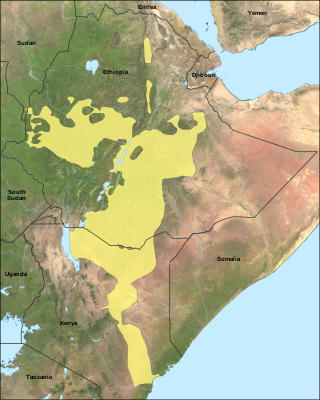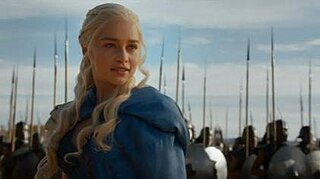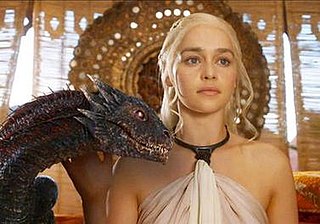In grammar, the vocative case is a grammatical case which is used for a noun that identifies a person being addressed or occasionally for the noun modifiers of that noun. A vocative expression is an expression of direct address by which the identity of the party spoken to is set forth expressly within a sentence. For example, in the sentence "I don't know, John," John is a vocative expression that indicates the party being addressed, as opposed to the sentence "I don't know John", in which "John" is the direct object of the verb "know".
The Finnish language is spoken by the majority of the population in Finland and by ethnic Finns elsewhere. Unlike the Indo-European languages spoken in neighbouring countries, such as Swedish and Norwegian, which are North Germanic languages, or Russian, which is a Slavic language, Finnish is a Uralic language of the Finnic languages group. Typologically, Finnish is agglutinative. As in some other Uralic languages, Finnish has vowel harmony, and like other Finnic languages, it has consonant gradation.
Linguistics is the scientific study of human language. Someone who engages in this study is called a linguist. See also the Outline of linguistics, the List of phonetics topics, the List of linguists, and the List of cognitive science topics. Articles related to linguistics include:

Oromo, historically also called Galla, which is regarded by the Oromo as pejorative, is an Afroasiatic language that belongs to the Cushitic branch. It is native to the Ethiopian state of Oromia and northern Kenya and is spoken predominantly by the Oromo people and neighboring ethnic groups in the Horn of Africa. It is used as a lingua franca particularly in the Oromia Region and northeastern Kenya.

Southern or South Sámi is the southwesternmost of the Sámi languages, and is spoken in Norway and Sweden. It is an endangered language. The strongholds of Southern Sámi in Norway are Aarborten Municipality (Hattfjelldal) in Nordlaante County (Nordland) and also in Raarvihken Municipality (Røyrvik), Snåasen Municipality (Snåsa), and Rossen Municipality (Røros), all of which are in Trööndelage County (Trøndelag). Out of an ethnic population of approximately 2000, only about 500 still speak the language fluently. Southern Sámi belongs to the Saamic group within the Uralic language family.

Alyutor or Alutor is a language of Russia that belongs to the Chukotkan branch of the Chukotko-Kamchatkan languages, by the Alyutors. It is moribund, as only 25 speakers were reported in the 2010 Russian census.
The Elgeyo language, or Kalenjin proper, are a dialect cluster of the Kalenjin branch of the Nilotic language family.

Eastern Pomo, also known as Clear Lake Pomo, is a nearly extinct Pomoan language spoken around Clear Lake in Lake County, California by one of the Pomo peoples.
In the Latvian language, nouns, adjectives, pronouns and numerals are inflected in six declensions. There are seven cases:
Lithuanian has a declension system that is similar to declension systems in ancient Indo-European languages, such as Sanskrit, Latin or Ancient Greek. It is one of the most complicated declension systems among modern Indo-European and modern European languages.
Brokpa is a Tibetic language spoken by around 5,000 people. It is spoken by descendants of pastoral yakherd communities.
Mekéns (Mekem), or Amniapé, is a nearly extinct Tupian language of the state of Rondônia, in the Amazon region of Brazil.
Nuaulu is a language indigenous to the island of Seram Island in Indonesia, and it is spoken by the Nuaulu people. The language is split into two dialects, a northern and a southern dialect, between which there a communication barrier. The dialect of Nuaulu referred to on this page is the southern dialect, as described in Bolton 1991.
"Valar Dohaeris" is the third season premiere episode of the HBO fantasy television series Game of Thrones. Written by executive producers David Benioff and D. B. Weiss, and directed by Daniel Minahan, it aired on March 31, 2013.

"And Now His Watch Is Ended" is the fourth episode of the third season of HBO's fantasy television series Game of Thrones, and the 24th episode of the series. It was written by showrunners and executive producers David Benioff and D. B. Weiss and directed by Alex Graves, his directorial debut for the series. The episode's title comes from a chant made by the Night's Watch at the funeral of a fallen brother while at Craster's Keep.

David Joshua Peterson is an American language creator. He came to prominence after creating the Dothraki and Valyrian languages for the television series Game of Thrones. He has subsequently worked on a number of other projects, including the films Dune and Dune: Part Two, for which he created the Chakobsa language. He has written a book on language construction entitled The Art of Language Invention.

Daenerys Targaryen is a fictional character in the series of epic fantasy novels A Song of Ice and Fire by American author George R. R. Martin. She is a prominent point-of-view character, and is one of the series' most popular characters. The New York Times cites her as one of the author's finest creations.
The Dothraki language is a constructed fictional language in George R. R. Martin's fantasy novel series A Song of Ice and Fire and its television adaptation Game of Thrones. It is spoken by the Dothraki, a nomadic people in the series's fictional world. The language was developed for the TV series by the language creator David J. Peterson, working off the Dothraki words and phrases in Martin's novels.

Daario Naharis is a fictional character in the A Song of Ice and Fire series of fantasy novels by American author George R. R. Martin and its television adaptation Game of Thrones.
This article describes the grammar of the Old Irish language. The grammar of the language has been described with exhaustive detail by various authors, including Thurneysen, Binchy and Bergin, McCone, O'Connell, Stifter, among many others.








